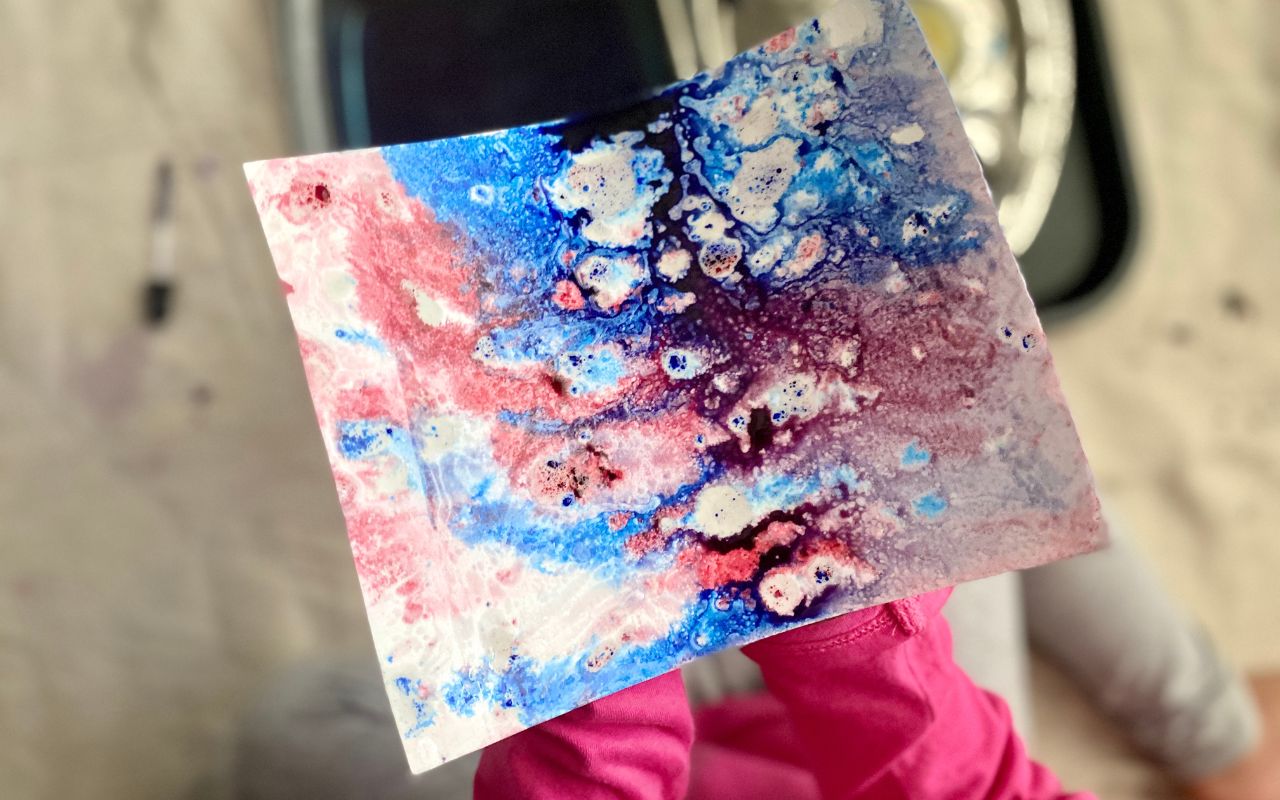This is an amazing printing technique that results in surprising and unpredictable, but always dazzling, effects.
By engaging in this Play Invitation, children can develop their observational skills, imagination, and creativity while exploring concepts such as floating, absorption, resistance, color mixing, or spreading in an exciting new way.
What Could Lead Us to This Play Invitation
- Children have been exploring water testing with floating;
- Children have been playing with mixtures (making potions and pretend baby food, for example);
- Children are excited about the concept of transference (playing with sponges and water, for example).
Materials Needed
- Liquid watercolors or food coloring
- Vegetable oil
- Watercolor paper
- Droppers or spoons
- Water
- Tweezers (optional)
Setting up This Play Invitation
- Prepare the oil mixture: In a small dish or jar, pour a small amount of oil and a squeeze of watercolors or food coloring. Mix with a fork until you see small drops of color. Repeat with as many colors as you like.
- Add about an inch of water to a glass pan and place it on a table within the children’s reach.
- Gather the droppers (or spoons) and the watercolors and place them close to the glass pan.
- Arrange for a flat surface to dry the paintings.
Tip: Some children may have never used a dropper before, so they may need to practice. You can offer a couple of jars with liquids and invite them to transfer from one to the other.
How to Create the Painting
- Using a dropper, squeeze the colored oil mixtures into the pan of water, creating incredible and fluid forms. (Use a spoon to transfer the oil mixture to the water if you do not have a dropper.)
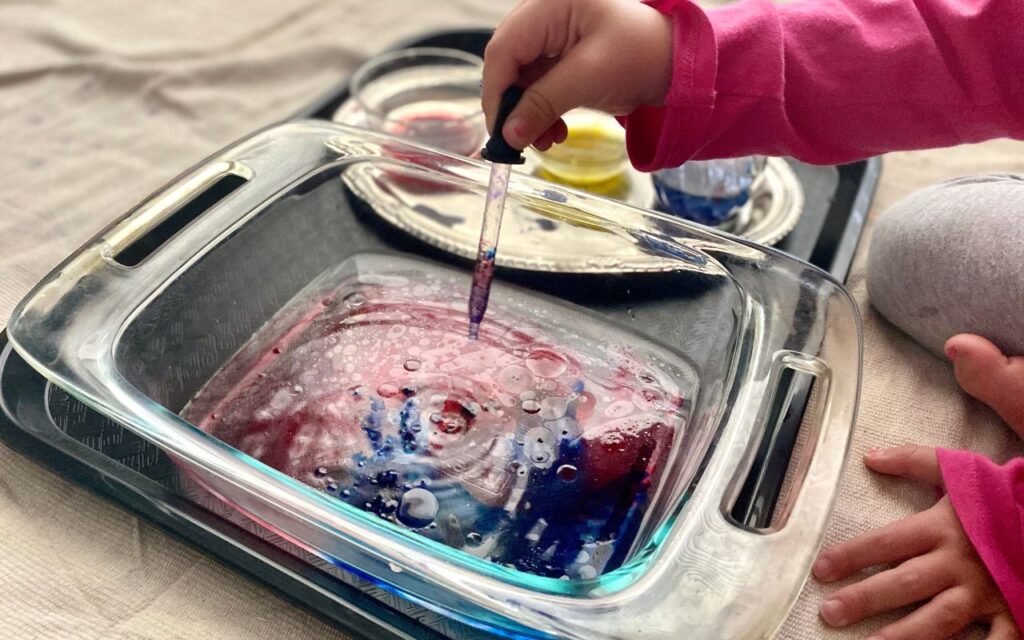
2. Place a piece of watercolor paper on top of the water. Push the paper into the water.
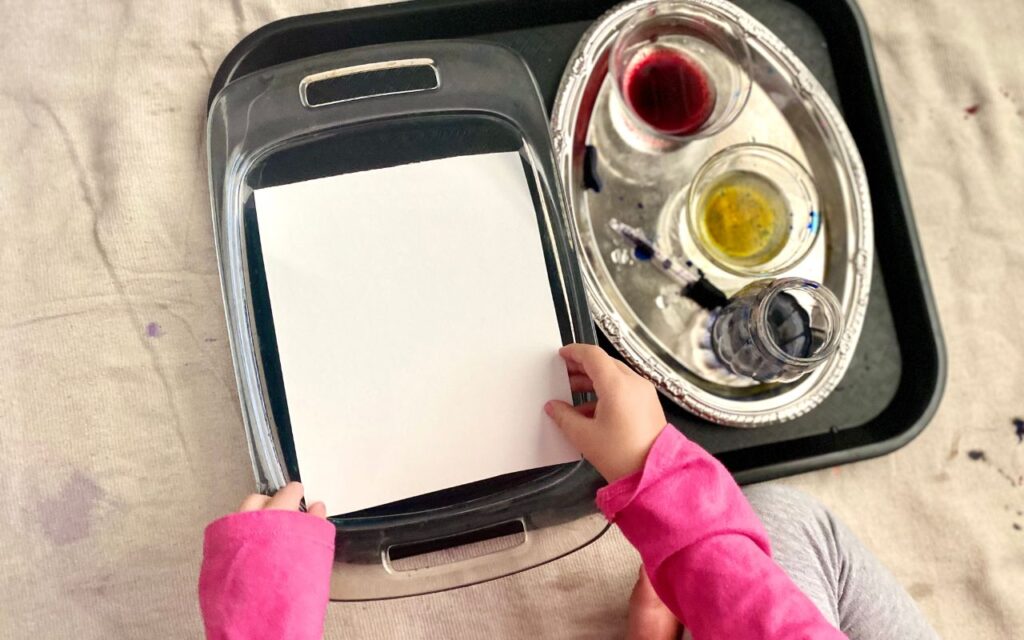
3. Pull it off and let it dry! Place it on a flat surface so it doesn’t run. It may take longer to dry fully since the oil will absorb into the paper.
Tip: You can offer tweezers to help children pull the paper up.
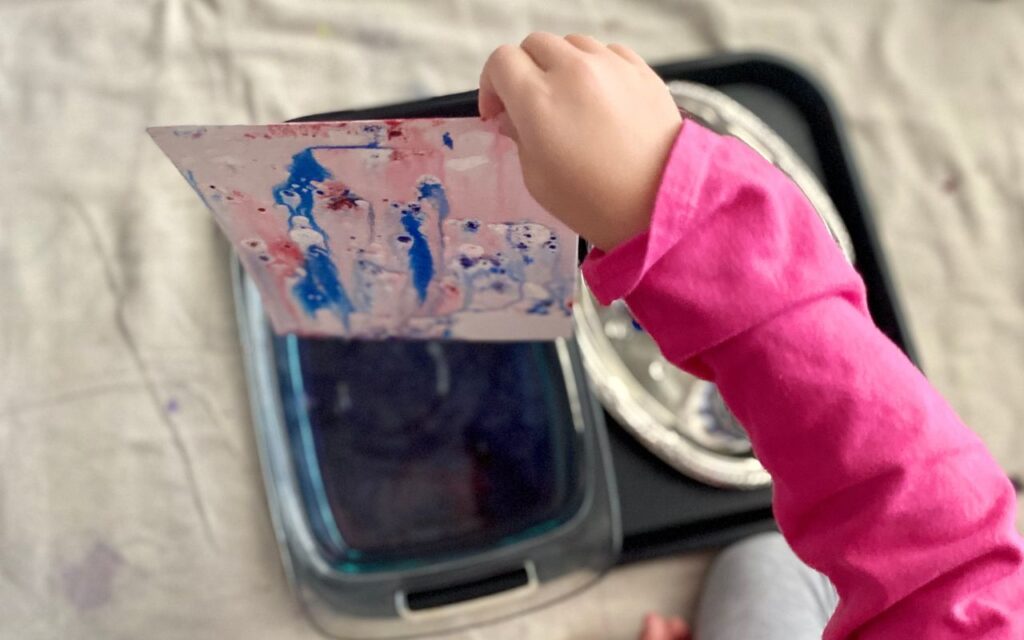
How to Nurture the Natural Unfolding of the Child’s Identity During This Play Invitation
- Children have the right to experiment with utensils that are breakable (such as glass pans). Using these materials offers children the opportunity to know and respect different materials, feel competent, learn that some items are fragile, and adapt their behavior appropriately.
- Children have the right to own the art process through its full stages. You can invite children to help you prepare the setting. And if you also prepare in advance the area where the paintings will dry, children can complete the entire art process autonomously.
The Academic Learning Opportunities
- MATH: Dividing a process into steps helps children understand time and sequence;
- PHYSICAL: Children develop small motor skills by using droppers and tweezers;
- SCIENCE: The concepts of absorption and transference are learned by the way pigments behave differently in oil, water, and on paper;
- ART: Children explore color mixing, shapes, and patterns.
Extensions
- Explore other mono-printing techniques such as foam printing.
Resource Recommendation
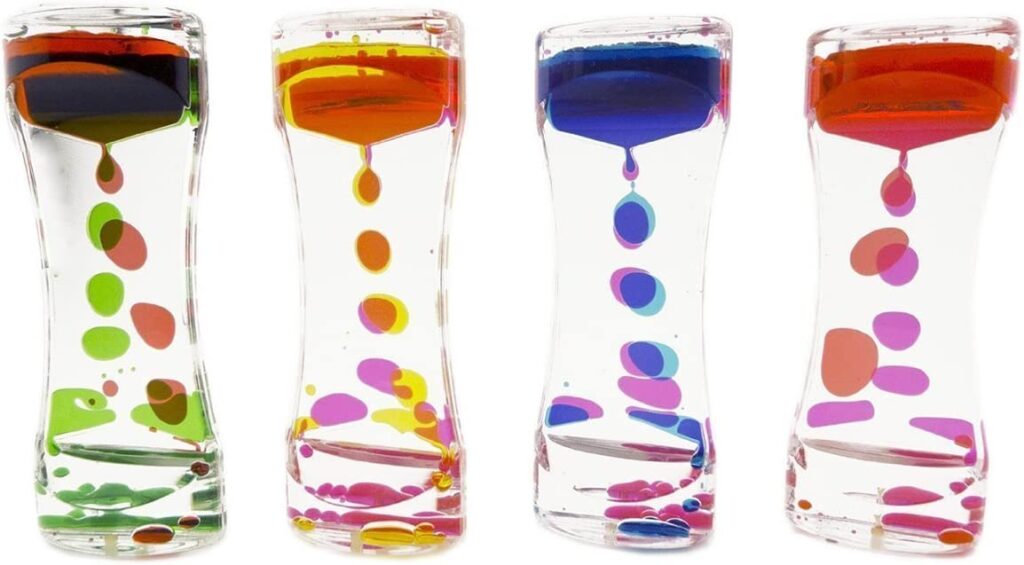
This is a mesmerizing resource to explore floating and color mixing that your children will love.
